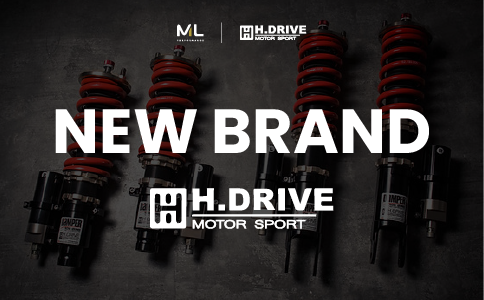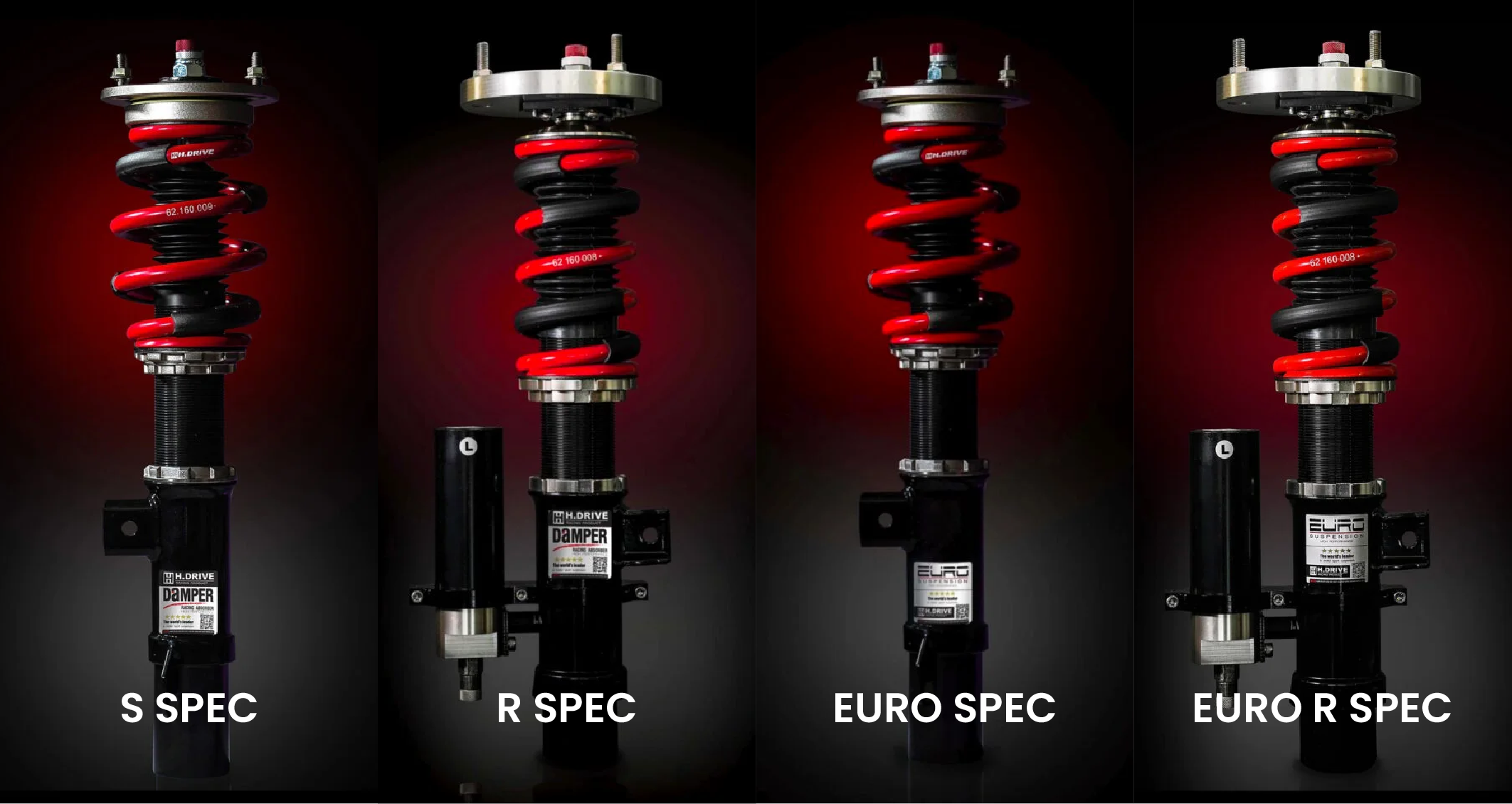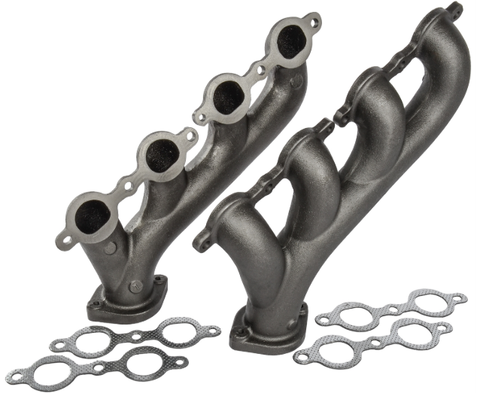Exhaust systems play a vital role in a vehicle's performance and also its overall efficiency. They are responsible for routing exhaust gases away from the engine while reducing noise levels and harmful emissions. Enhancing your exhaust system can help your engine run more efficiently and perform better.
One common fallacy is that the larger the exhaust system, the more power it will generate. However, this is not true. The performance of a car depends on the components in an exhaust system which helps in increasing more power.
Here are some key components of an exhaust and how they enhance performance:
Exhaust Manifold / Header
The exhaust manifold/header collects exhaust gases from each cylinder and funnels them into a single pipe. Replacing the stock exhaust manifold with a performance-oriented header can improve exhaust flow and increase power output.
The exhaust gases produced during combustion need to be efficiently expelled from the engine's cylinders. Stock exhaust manifolds are often designed with cost and ease of manufacturing in mind, which can result in restrictive and unevenly shaped passages. Aftermarket headers are engineered to have smoother, larger-diameter tubes and tuned lengths, allowing for more efficient evacuation of exhaust gases. This reduces backpressure, which can rob an engine of power.
Backpressure occurs when exhaust gases face resistance as they try to exit the engine. While some backpressure is necessary for optimal engine function, excessive back pressure can hinder performance by making it harder for the engine to expel exhaust gases. Headers are designed to minimise back pressure by providing a more direct and unrestricted path for exhaust gases to exit the cylinders.
ML Performance offers exhaust manifold / headers brands like Supersprint, Akrapovic, Fabspeed, JH Motorsport for a wide range of models including BMW, Porsche and even Ford.
High-Flow Catalytic Converter
Upgrading to a high-flow catalytic converter allows for better exhaust gas flow while still reducing harmful emissions. Just like with exhaust manifolds and headers, high-flow catalytic converters is the reduction of backpressure in the exhaust system.
High-flow catalytic converters are designed with larger and smoother internal passages, allowing exhaust gases to flow more freely. This reduction in backpressure can help the engine expel exhaust gases more efficiently, resulting in improved horsepower and torque.
When upgrading to a high-flow catalytic converter, it's often recommended to adjust the engine's tuning to optimise performance. This can involve recalibrating the engine control unit (ECU) to accommodate the improved exhaust flow. Failure to do so might result in suboptimal performance gains or even trigger warning lights on the dashboard.
We recommend the Fabspeed brand for supercars owners while Supersprint, CTS Turbo, Evolution Racewerks and Active Autowerke for BMW cars.
Cat-Back Exhaust System
A cat-back exhaust system replaces the exhaust system components from the catalytic converter to the exhaust tip. A high-quality cat-back system can improve exhaust flow and provide a deeper, more aggressive exhaust note.
Cat-back systems often feature smoother bends and larger pipes compared to stock systems. This promotes smoother and faster exhaust gas flow. The improved flow means that exhaust gases are evacuated from the cylinders more quickly, which can result in increased engine efficiency and better overall performance.
While not directly related to performance, many cat-back systems are designed to alter the sound of the exhaust note. Performance-oriented cat-back systems often have a more aggressive and sporty sound. This change in exhaust sound can be appealing to enthusiasts and can give the impression of increased power, even if actual performance gains are minimal.

Stone Exhaust is one of our most recommended brands for BMW and Mercedes vehicles.
Downpipe
Replacing the stock exhaust pipes with larger diameter, mandrel-bent pipes can further reduce restrictions and improve exhaust flow, boosting engine power and efficiency.
Like other components in the exhaust system, the downpipe can contribute to backpressure. The larger diameter and smoother bends of an aftermarket downpipe promote better exhaust gas flow. This allows the engine to expel exhaust gases more efficiently, leading to improved overall engine performance, including horsepower and torque gains.
Aftermarket downpipes are often made from materials that have better heat resistance properties compared to stock components. This can help reduce the buildup of heat in the exhaust system, preventing heat-related performance losses and potential damage.

Our best seller downpipe is our very own Masata brand for BMW B58, N55 and S58 engines as it is reasonable in price and also proven to improve performance.
Apart from exhaust components, there are also non exhaust components that will complement the exhaust system in enhancing performance.
Tuning and ECU Remapping
To optimise the performance gains from your upgraded exhaust system, consider getting a professional ECU remap or tune. This process adjusts the engine's parameters to work better with the improved exhaust flow, maximising power gains.
In turbocharged or supercharged engines, the level of boost (compressed air entering the cylinders) can be adjusted to increase power output. Tuning can involve adjusting the boost pressure to safely extract more performance. This may also require adjustments to other parameters to ensure proper fuel delivery and engine management.
If you've made other performance modifications, such as installing aftermarket exhaust systems, intakes, or turbos, ECU remapping can ensure that these modifications are properly integrated into the engine's performance parameters.

The Bootmod3 Remap/Tune License and MHD Universal WiFi OBDII Flash Adapter are some best options we recommend for BMW vehicles when it comes to enhancing performance.
Confused which to choose; BM3 or MHD? Jump on our previous article BM3 vs MHD: Which is better? where we compared these tuning options.
We also offer Integrated Engineering ECU / TCU Tune for Audi and Volkswagen vehicles.
Cold Air Intake
An aftermarket cold air intake can complement the upgraded exhaust system by allowing more oxygen into the engine, leading to better combustion and increased power.
Cooler air is denser than hot air, which means it contains more oxygen molecules per unit volume. Oxygen is a crucial component for combustion in the engine. By supplying the engine with denser air, a cold air intake allows for better air-fuel mixing, resulting in more efficient and complete combustion. This can lead to increased power output.
Stock air intake systems often draw air from within the hot engine compartment, where temperatures can be significantly higher than outside air temperatures. A cold air intake locates the air filter and intake components in a position where they can access cooler outside air. Cooler air helps prevent the engine from receiving air that's too hot, which could lead to power loss due to decreased air density and increased risk of detonation or also known as knocking.

MST Performance, aFe and Armaspeed are a few recommendations for your BMW, Audi and Volkswagen.
It's essential to note that modifying the exhaust system and other engine components can affect emissions and may not be legal in some regions or countries. Always check local regulations before making any modifications.
Additionally, modifying the exhaust system can void the vehicle's warranty, so it's crucial to consider these factors before proceeding with upgrades.

























